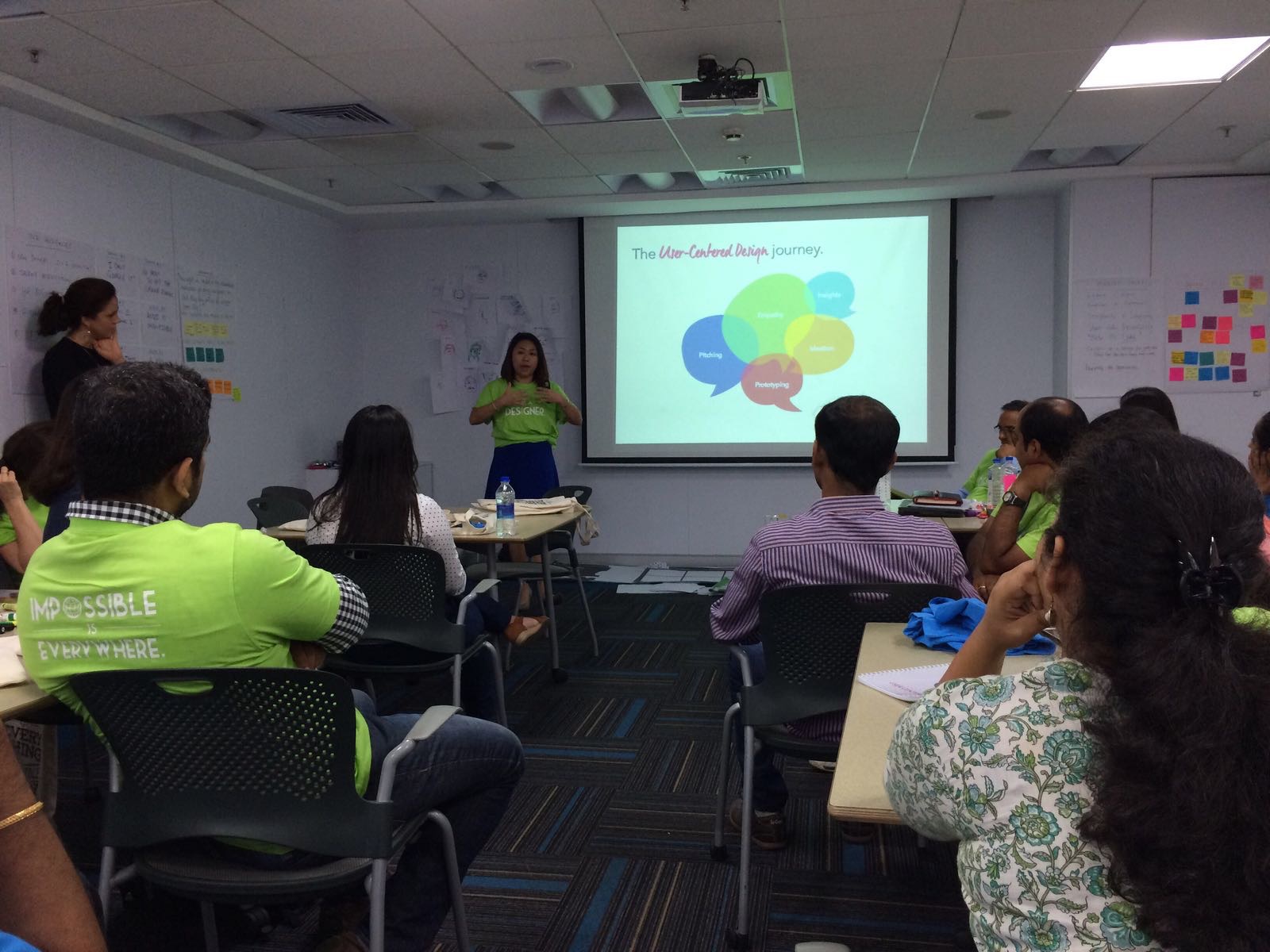Design Thinking Stories in Organisation
ABOUTThis is the space where Winnie tells the stories of how she used Design Thinking to tackle challenges creatively through a selection of case studies from her work.

What is Design Thinking?
ABOUT“Design thinking is a human-centered approach to innovation that draws from the designer's toolkit to integrate the needs of people, the possibilities of technology, and the requirements for business success.”
— Tim Brown, CEO of IDEO
Design Thinking is a methodology used by designers to solve complex problems, and find desirable solutions for clients. A design mindset is not problem-focused, it’s solution focused and action oriented towards creating a preferred future. Design Thinking draws upon logic, imagination, intuition, and systemic reasoning, to explore possibilities of what could be—and to create desired outcomes that benefit the end user (the customer).
To Winnie, it is also an approach and attitude which she applies to building both her work and her life. In the following, you can read about a few case studies on how she made use of Design Thinking to solve tricky problems.

Attract and nurture talent to develop a career in FinTech
CASE STUDY #1What’s the challenge?
FinTech company often scales in a rapid speed with fast expansion in organisational structure and people needs. For a promising FinTech company with almost 200 employees, high attrition was noted as a red flag to the management as the business continued to grow rapidly. A series of challenges were also observed alongside to it, including a low workforce morale, uncertain and fearful culture, inconsistent work practices, lack of communications… creating an operating model which could facilitate and support rapid growth became a critical concern to the company. Winnie's role was the consultant.
What’s the design process?
55 people across seniority, tenure, nationality, and department from the company were interviewed in four weeks. In each of the ethnographic interview, interviewees were guided to share their personal experience at the company, revealing the insights about the needs, desires, pain points and challenges, which were translated into a few Persona Profiles. A series of ideation workshops were designed and facilitated for mixed audience groups to tackle challenges identified from the ethnographic research, using several HCD techniques including but not limited to Creative Matrix, Affinity Clustering, Impact and Difficulty Mapping, Concept Posters etc.
What’s the outcome?
Fantastic outcome revealing authentic insights emerged from the comprehensive current state assessment; practical and specific recommendations have been put against all the five major pain points identified for immediate action. At least three of the concepts resulted from the Ideation Sessions developed by the employees were put into actual development.

Democratise talent by enabling the global internal workforce to showcase individual talent, build meaningful network and connect to opportunity for growth
Case Study #2What’s the challenge?
The bank with 95,000 employees has 70% of its talent supplied from external hires - enormous agency cost, and dissatisfied employees with limited career growth and development opportunities. Could we help people become more innovative and collaborative? Winnie took the initiative to form a working group with two talent specialists with an ambition to design a solution for this.
What’s the design process?
They started with talking to lots of people from different businesses and markets, and finding patterns from data. The ah-ha moment came from the fact that people lacked innovation and collaboration opportunities to showcase their capabilities and to make the connections they needed beyond the resume they uploaded to an unfriendly online platform.
The challenge was then reframed as “how might we make it as easy for employees to find a new job internally as it is to find a job outside of the bank?”, created concept poster to conceptualise the opportunities and articulate ideas aligned with business success management. The group also researched to understand the organisational context and constraints to ensure the idea was both desirable and pragmatic.
What’s the outcome?
Winnie's group won the sponsorship from the bank’s management to explore this idea where employees could pitch for themselves online, join Scrum projects and network over coffee chat organised through an app for increased exposure and development. This project entered the incubation phase and was developed into a prototype product in the enterprise.

Energise and nurture an innovative community to help our teams design and do the best work of their lives
CASE STUDY #3What’s the challenge?
Organisation often jumped into solution and execution endorsed by the senior management, especially in how technologies were implemented. To shift the way how people tackle problems, we explored the opportunity to provide the right tools, resources and support to enable people to innovate. Winnie's role was the project co-lead.
What’s the design process?
Winnie went out to people to understand what they needed when they worked on big and small projects through interviews and observation. She researched to look at what was offered and what the gap was - systemised design process and approach in the way that suited the organisational culture, centralised design resources, established global standards, and advocated for HCD to provide consultations to business, conduct analysis and on-site research to identify strategic opportunities.
What’s the outcome?
An online design thinking community was established where all the tools were shared and testing groups were voluntarily formed as an employee panel to test out prototypes.
Winnie also facilitated discovery sessions with senior leaders using HDC. For example, She partnered with the global C-suite leader to conduct “a week in the life of…” to identify opportunities to enhance technology experience for the Headquarter team in London.

Make notification human and help organisation build competencies to create sustainable tone of voice
CASE STUDY #4What’s the challenge?
How do we bring the “human” element back into digital transformation? For more than ten years, employees relied on several internal applications related to HR, Finance and IT to do their day-to-day job. However, people often got massive headache in understanding these technologies, especially when they couldn’t understand what they were required to do after receiving the system messages. It hugely discounted people’s productivity.
What’s the design process?
Winnie led a working group composed of engineers, product owners, process owners and designers, and conducted a current state assessment to understand how system and business worked together, what the dependencies and constraints were, and how people felt.
The idea developed was to “create a clear, concise and human tone of voice”. Winnie developed project plans, and implemented the review, design and change process in collaboration with subject-matter experts.
What’s the outcome?
A total of 2,000 canned templates of system message were rewritten and the way how technology should sound was revamped. Winnie also worked with our brand leaders to establish a global tone of voice standard and guidelines for the bank, guiding how people communicate internally and externally. This change was never a one-off initiative, but a cultural shift. For a sustainable impact, a train-the-trainer model was designed for the 600 employees at the shared service center in India, where future technology-related communications would continue to be written from.
















